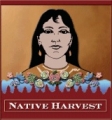Ojibwe Unit: A Year-Long Study (Part 3-Seasonal Activities)
This lesson explores the four seasons based on traditional Ojibwe lifeways (food, homes, hunting, fishing, arts and activities)
Materials Needed
Resources

Art Materials
- Art materials for the creation of poster displays showing seasonal practices
- Colored pencils
- Markers
- Poster board
Activity Process
Motivation:
As a class we talk about the turn of seasons and what that meant to Ojibwe families past and present.In the summer, families return to their gardens and canoes by the lakes. Summer is the time for gathering, for feasts and dances and games. Summer work included birch bark gathering, fishing, berry gathering, hunting.Fall is the time to move to the wild rice camps and prepare for the harvest, gathering wild rice, hunting, trapping.Winter is a time for crafts that can be done sitting down together, storytelling, hunting, fishing through the ice, and trapping.Spring is the time to move to the sugar bush and begin making maple sugar and spear fishing.
Demonstration:
Students will create an informational poster based on the season they choose to illustrate. I show them examples of a few posters for different seasons that show season specific food, living arrangements, hunting, arts and ways of socializing.
Activity:
- Expore the Nahgachiwanong CD; the 13 moons. we watched specific sections based on the season the class was studying at the time.
- We then read "Life in the Summer","Life in the Fall", "Life in the Winter" and "Life in the Spring" all from 'The Ojibwe People', a Minnesota historical Society publication (MHS).
- As a group, discuss and complete the "Camp" worksheet for all seasons in student activity booklet, of the MHS publication.
- Explore Gathering Together CD Seasons- watching sections in the order that pertain to the season we are studying.
- We watched two Lorraine Norgaard Videos; one on maple sugar(spring) and the other on wild rice (fall).
- After the reading exercises, each student will create a seasonal activities poster which includes: A Venn Diagram that compares the seasonal activities of the Ojibwe during the 1700-1800's to seasonal activities of today during the season the student picked; A drawing of the camp which includes a drawing of the shelter used during the season the student is reporting on and several seasonal activities; A written description of where the seasonal camp is located and the reason it is located there; and a colored border using a traditional Ojibwe design.
Closure:
Students will present their posters to classmates in other classrooms, and display the posters in the library for school and community viewing.
Checks:
Student assessment: Students will write a summary paragraph about the Ojibwe Seasonal Activities to accompany their poster for display.
Vocabulary Words
- Aabita-niibino-giizis (July (Mid-summer Moon))
- Anishinaabe-ziinzibaakwad (Maple sugar)
- Biboon (Winter)
- Binaakwe-giizis (October (Falling Leaves Moon))
- Gashkadino-giizis (November (Freezing Moon))
- Gichi-manidoo-giizis (January (Great Spirit Moon))
- Iskigamizige-giizis (April)
- Manidoo-giizisoons (December (Little Spirit Moon))
- Manoomin (Wild rice)
- Manoominikie-giizis (August (Ricing Moon))
- Namebini-giizis (February (Sucker Fish Moon))
- Niibin (Summer)
- Ode-imini-giizis (June (Strawberry Moon))
- Onaabani-giizis (March (Hard Crust on the Snow Moon))
- Waabigoni-giizis (May (Flowering Moon))
- Waatebagaa-giizis (September (Leaves Changing Color Moon))
- Ziigwan (Spring)

Comments
Extensions: Ricing and sugar bush field trips Fry Bread Feast and Story Telling Pow Wow Beading Dream Catchers